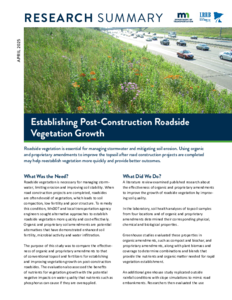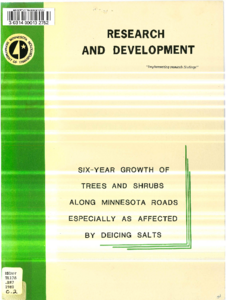Comparison of Compost and Proprietary Soil Amendments for Vegetation Establishment
Creator
Date Created
2025-03
Report Number
2025-22
Description
Six-year growth of trees and shrubs along Minnesota roads especially as affected by deicing salts
Creator
Date Created
1980-07
Report Number
1980-07
Description
Best Practices for Boulevard Tree Selection
Date Created
2024-08
Report Number
2024RIC04
Description
Production and Characterization of Mycorrhizal Fungal Inoculum
Date Created
2004-07
Report Number
P2004-01
Description










